If you’ve ever found yourself reaching for a can of cooking spray before scrambling your morning eggs or pouring cake batter into a pan, you know that it is a useful and easy way to avoid a sticky situation.
Cooking spray is so useful, in fact, that you can think of it as the kitchen equivalent of WD-40. Whenever you need a tiny touch of lubrication—just enough to get out of a tight spot—that’s when you take out the can of cooking spray. A wide range of canned oils are sold commercially, or you can fill a reusable oil sprayer bottle with the oil you need, so you don’t have to settle for a generic cooking spray.
But beyond the typical uses for cooking spray, there are a number of others that can ease some of your common kitchen frustrations. Here are six of our favorites.
Measuring sticky ingredients like peanut butter or honey
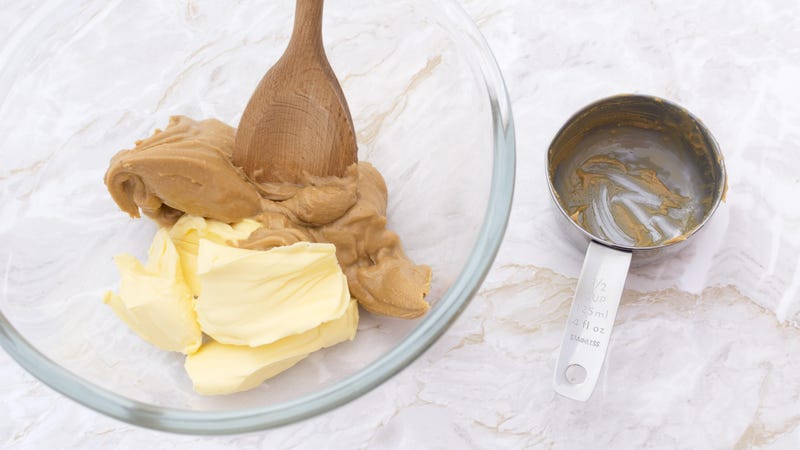
Photo: Sarah Marchant (Shutterstock)
Measuring out peanut butter, honey, molasses, or any of the other sticky ingredients that make your baked goods and smoothies taste so fantastic is always a giant pain in the you-know-what.
First you have to wrangle the ingredient into the measuring cup, try to level it the best you can, and then scrape it out afterwards. This inevitably leads to a big mess and wasted ingredients—some of which can be quite expensive—not to mention a less-than-precise measurement.
This is where cooking spray comes in: To avoid this pain point, simply lightly coat the measuring cup with cooking spray before you add the sticky ingredient so that it will slide right off. This same strategy also works for measuring sticky ingredients with a spoon.
No more messes, no more wasted ingredients AND a precise measurement. Win-win!
Keeping herbs from sticking to your knife
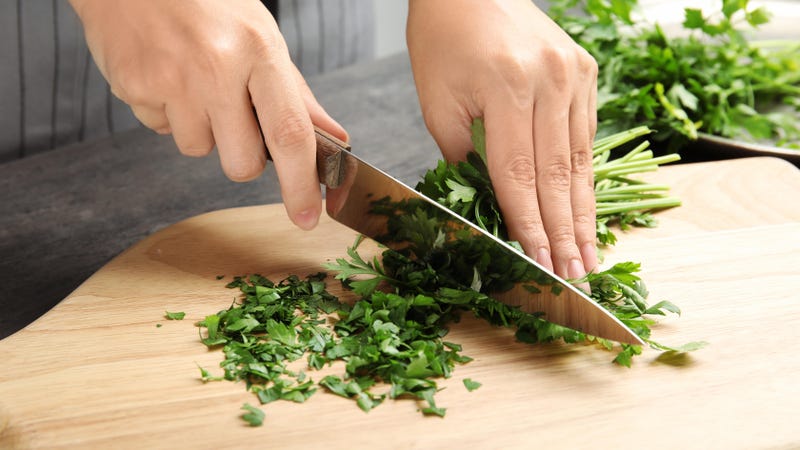
Photo: New Africa (Shutterstock)
In a similar vein, chopping herbs is a frustrating exercise in watching your greens stick to the wrong surfaces. Half the effort of chopping delicate herbs is having to constantly sweep them off the knife, which leads to wasted ingredients, as well as extra effort.
To make this easier, spray some cooking oil on the knife blade first. Not only will this tiny hack work for delicate herbs such as cilantro and basil, but it’ll also help when you’re chopping onion and garlic.
Keeping your Tupperware stain-free

Photo: Laura Riquelme (Shutterstock)
Tupperware is fantastic for storing leftovers, and just as good at accumulating stains that just won’t scrub off, which means your containers will always look dirty. It’s not the best way to make those leftovers look appetizing.
You can prevent this problem with a little cooking spray: Just spray the container before you put in your leftovers. Not only will the food slide right out of the container again, it will help keep those ugly stains from forming.
Keeping plastic wrap from sticking to rising bread dough
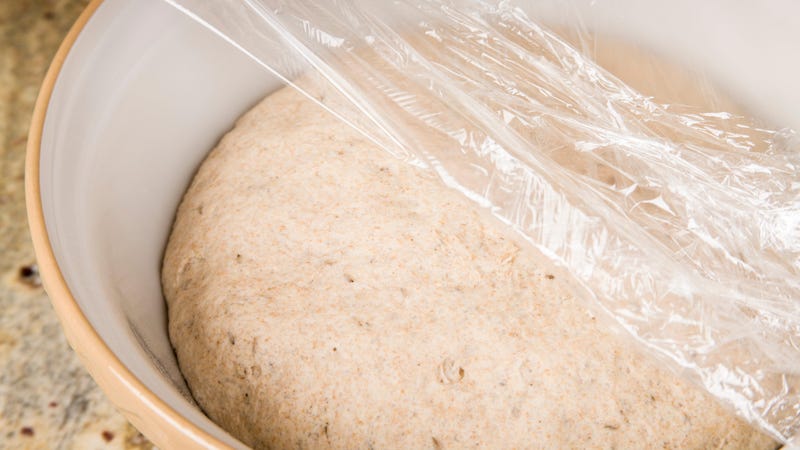
Photo: Danita Delimont (Shutterstock)
If you’ve ever baked bread—who else got way too into baking during the pandemic?—you know many recipes call for placing your raw dough into a bowl or onto a baking sheet and covering it with plastic wrap while it rises. Inevitably what happens is that the dough will rise and stick to the plastic wrap, which leads to the dough tearing or deflating when you have to remove the wrap.
To prevent this, light coat the plastic wrap with some cooking spray before placing it over the bread; it will come right off again when you’re ready to pop your loaf into the oven.
Preventing ice buildup your freezer
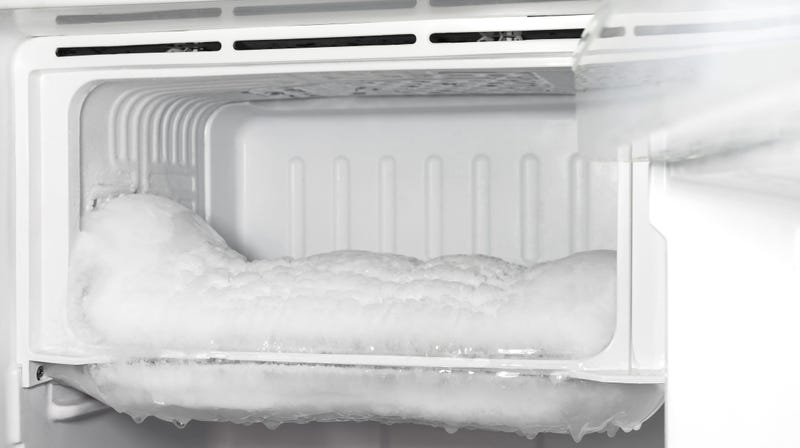
Photo: Nattapon B (Shutterstock)
Ice buildup in your freezer happens for a number of reasons, such as humid air condensing into ice, or setting the temperature too high or too low. Whatever the reason, it’s a pain to remove, as getting rid of it often requires emptying and defrosting the freezer.
To prevent ice from building up in your freezer in the first place, spray the areas where ice normally forms with a generous amount of cooking spray, let it sit for five minutes, then wipe it off.
Cleaning your cheese grater
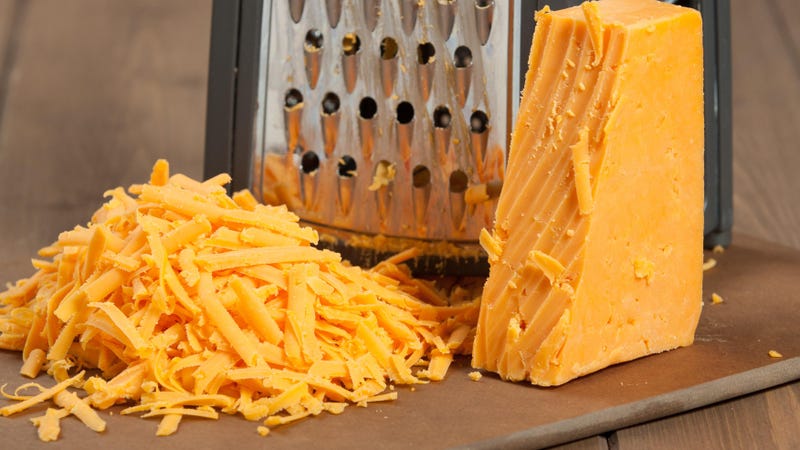
Photo: EasterBunny (Shutterstock)
Cleaning your cheese grater can be messy, as the job usually leaves a lot of residue behind on your grater. Combine that with the challenge of cleaning the shredding holes without cutting yourself, and you’ve got the makings of a truly annoying kitchen task. Normally, my strategy for cleaning the cheese grater is to dump it into hot, soapy water, and clean it the best I can. This strategy usually results in an almost-clean grater that still has some residue left, in spite of my best efforts.
Instead, you can use cooking spray to make clean-up easier. A number of sources suggest spraying your cheese grater before grating, as that supposedly makes the whole process easier, but I’m not a fan of oil residue on my cheese. Instead, my suggestion is to spray your grater after grating your cheese, as that will still help dissolve the residue, making your clean up easier without coating your cheese in oil.
This article was written by Rachel Fairbank from Lifehacker and was legally licensed through the Industry Dive publisher network. Please direct all licensing questions to legal@industrydive.com.





